I hope you’re hungry because we’re about to serve up a hope sandwich to humanity! The two main ingredients in today’s dish? Mushrooms and Permaculture, a mouth watering combination full of tasty tangible solutions to satisfy many of humanity’s greatest hungers…we mean challenges.
So get ready to mow down as we outline the ethos of permaculture, the various zones in a permaculture design, and how our mushrooms fit into this amazing system
"Permaculture is dependent on the prospect for us doing GOOD, not just less bad - and that's really been the driver for a lot of the modern environmental movement, is people doing 'less bad.’ Ultimately, it would be better if you didn't live with that approach. I want to live and I want the lives around me to live better because I have lived. So all of a sudden, humans start doing good. And then impact is a great thing. Footprint is something we want to leave".
- Ben Falk (@wholesystemsdesign) , INHABIT film
Like any science, permaculture isn’t so much a hard and fast thing as it is a process. More specifically, it’s a design process.
Originally, permaculture was created to help solve the destructive practices of industrial agriculture. In fact, the term permaculture was created by combining “permanent” with “agriculture.” But similar to mushroom cultivation, permaculture design isn’t limited to food production. Instead, its principles can be implemented in any space we occupy.
Fundamentally, permaculture is a modern approach based on ancient indigienous wisdom that’s guided by three ethics—earth care, people care and fair share—and twelve principles.
In a design sense, any space seen through the lens of permaculture can be broken down into six different zones.
Zone 1 is the area closest to your living quarters and the area where you spend most of your time and energy. Extending outward from this focal point are the rest of the zones, with the time and energy devoted to each subsequent zone decreasing until you get to Zone 5, which is often reserved for rewilding and thus requires little to no effort.
In its most basic form, permaculture design can be seen as a process of skillfully stacking functions to maximize efficiency and achieve your goals with as little effort as possible.
Here at the Fungi Academy, we’ve always got mushrooms on our minds. So, let’s see how we can combine mushrooms and to leave one massively positive “footprint.”
Mushrooms and Permaculture Ethics
In every facet of permaculture, the ethics guide the design. If they don’t, you need to revisit your design and motivations then readjust and intervene to right the ship. If you don’t, well, then it may be cool but it ain’t permaculture, baby.
Earth Care
One reason permaculture excites people’s minds, hearts and souls is because it focuses on mending our relationship with the natural world. While there are some great technologies being developed to help this cause, the greatest of them all may be mushrooms and fungi.
Whether you’re using mycelium to clean soil and water pollution via mycoremediation, filtering chemicals and dyes out of water via mycofiltration, reversing desertification and building topsoil with the help of saprophytic fungi, or creating myco-materials to replace some of our most environmentally destructive industries, there’s almost no task too tall for our fungal friends.
The best part? The mushroom with perhaps the most potential to bridge the divide between mushrooms and permaculture is also one of the easiest to grow: Oyster mushrooms, or as well like to call it, the Swiss Army Knife of Fungi.
People Care
How can you enrich the lives of your family, neighbors and community through permaculture design? This question lies at the center of “People Care,” our second permaculture ethic.
Combining mushrooms and permaculture to answer this question is rather straightforward. Put simply, once you know how to grow mushrooms you know how to grow food and medicine.
What kind of medicine, you ask?

For one, there’s the Reishi (Ganoderma lucidum) mushroom,—known as the “Mushroom of Immortality”— which has been used for thousands of years in Traditional Chinese Medicine to care for a multitude of maladies.
But there’s plenty more too, like Turkey Tail (Trametes versicolor) for fighting cancer, Cordyceps (Cordyceps militaris) for boosting energy, and Lion’s Mane (Hericium erinaceus) for improving cognitive function and gut health.
Fair Share
It seems that much of today’s environmental degradation is caused by humanity seeing the natural world as something to conquer, extract, and commodify. To change this paradigm, we must recognize the planet as not only our home but the home of trillions of other living creatures with which we should seek to live alongside in harmony.
Put another way, before you fill your plate with seconds you must first make sure everyone else has eaten.
Mushrooms are extremely adept at providing food security and encouraging ecological diversity in line with the fair share ethos.
Edible mushrooms are low-cost, environmentally sustainable to produce, endemic to and accessible in every climate, require very little physical space and are regenerative by their very nature, making them the perfect partner in permaculture design. By now you’re probably starting to understand why we call mushrooms and permaculture the perfect marriage.
Incorporating Mushrooms and Permaculture Zones
The “zones” in permaculture design were first created by Bill Mollison, the father of modern permaculture. Permaculture zones are best understood as a tool for designing an efficient homestead.
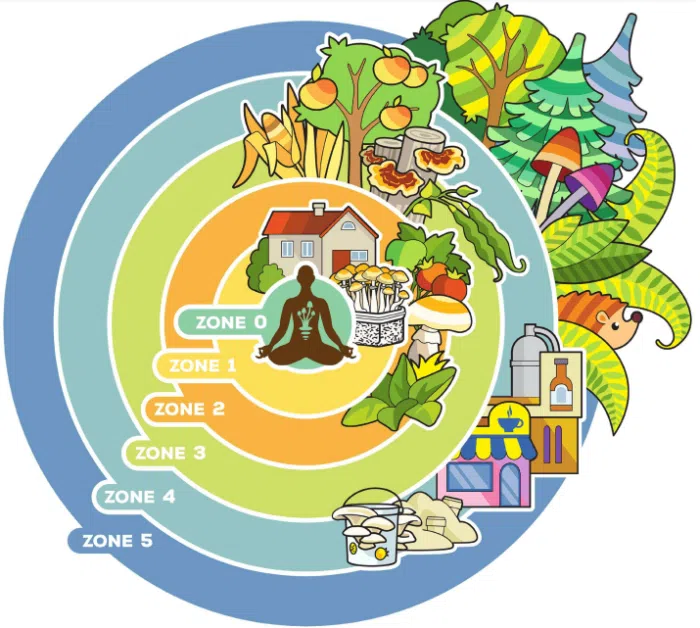
Zone 0: The Self
Where do you spend most of your time? In your body, of course!
Zone 0 is focused on taking care of numero uno, your consciousness and the meat suit it occupies on this Earthly plane. Before becoming intimate with the world around you, you must first become intimate with yourself.
Zone 0 focuses on physical, emotional, mental and spiritual well-being. Here, you tune into what you ingest into your mind, body and soul on a daily basis.
Mushrooms are amazing allies in this zone. Polypores like Reishi and the others listed above are amazing sources of preventative medicine you can integrate into your daily routine. Edible mushrooms are all medicinal on some level and provide your body with the essential vitamins, minerals and macronutrients your body needs, even more so for those who practice a plant-based diet.
However, the real champions of Zone 0 may be psychoactive mushrooms, which have demonstrated the ability to help people heal their mind, body, soul and spiritual self through occasional macro doses or through microdosing on a semi-daily basis (for best practices, consult our microdosing guide).
It’s my opinion that you cannot truly love others until you truly love yourself. The psychedelic experience can bring you closer to this truth by allowing you to leave your patterned self-perspective and evaluate yourself from the viewpoint of a compassionate third-person. In this way, you’re able to pinpoint aspects of your life that may be detrimental and then map out a plan for change. Now that’s self-love.
Don’t believe me?
Well there are plenty of studies showing the potential for psilocybin to be one of the best treatments on the market for addictions like smoking and alcoholism.
Psychoactive mushrooms have also shown the potential to be a revolutionary treatment for depression. In essence, this healing comes from psilocybin’s ability to momentarily break the mind free from its normal patterned thoughts, thereby allowing you to create new perspectives and relationships with old habits.
Much of this healing may also be due to the ability of psychedelics to dissolve your ego and help you experience unity with the universe and its myriad life forms. Ultimately, I believe this is the key to repairing our relationship with the natural world.
Zone 1: The Home and Laboratory
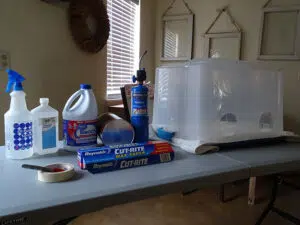
Zone 1 is the place you visit everyday, the most managed, controlled and manicured place on your property. In the marriage of mushrooms and permaculture, this equates to your home and laboratory.
It’s here where you’ll grow and process the medicine you’ll then share with yourself, your family and your community.
It’s essential to have the right tools for the job as well as an organized, comfortable and sterile work environment. Some essentials for a mushroom cultivator to have in Zone 1 include a still air box (or flow hood), fruiting chamber, dehydrator and pressure cooker.
Zone 2: Mushroom Beds & Garden Giants
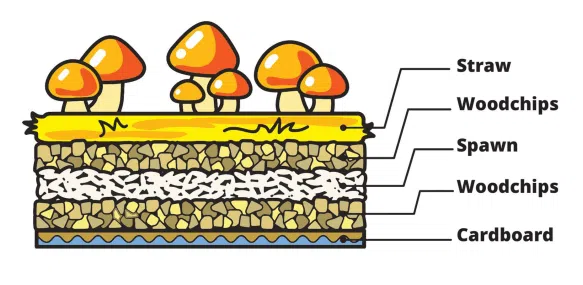
You won’t spend as much of your time in Zone 2 as in Zone 1 but you’ll definitely check it everyday. In permaculture design, this refers to perennials, compost piles and animal dwellings.
In the world of mushrooms and permaculture, this is where you could create outdoor mushroom beds of cardboard and straw with fresh mushroom spawn layered between. Or it could be where you intentionally utilize mushrooms like Oysters (Pleurotus sp.) or the Garden Giant (King stropharia) to improve soil health.
Zone 3: Mushroom Logs and the Mycorrhizosphere
In Zone 3, you start to venture further from your home and into much larger spaces usually used for long-term agricultural practices. This includes orchards for fruits and nuts and/or tree stands for lumber and bamboo.
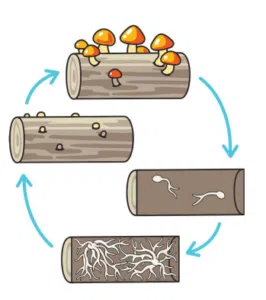
For the mushroom cultivator in you, this is the perfect place for inoculating logs with mushroom spawn since they typically take at least one year before producing mushrooms but require little to no maintenance in the meantime.
When combining mushrooms and permaculture, it’s essential to utilize regenerative practices like no-till to keep the natural mycorrhizal mycelial networks intact. This network’s importance to soil and general ecological health is difficult to overstate. It acts as a natural defense against pests and provides crops with nutrients they couldn’t otherwise access
Zone 4: Waste Streams and Human Industry
In Zone 4, you’ve reached the boundary of the land you actively manage. What you do with this area is site, space and person dependent.
Zone 4 not only relates to the waste you create and manage on your property. It also includes the outputs that leave your property and enter the surrounding ecosystem and community at large.
For mushroom cultivators, spent substrate and plastic waste are two prime examples. It’s imperative to consider the ecological impact of your outputs, like disposing a non-native substrate block of mycelium into your local surroundings.
But being conscious doesn’t just mean avoiding harm. Remember, we’re trying to leave a good footprint. So consider utilizing fungi like saprotrophic fungi, which feed on dead organic matter, to regenerate plant and animal matter into healthy soil.
Or perhaps you can use “waste products” like manure, cardboard, coffee grounds or corn husks as nutrition for your mushroom grows. Remember, nature wastes nothing!
Zone 4 is exciting because it holds the most potential for citizen science experimentation and solution-finding. As a mushroom cultivator, this is an area where you could make a real contribution to the field of mycology. Experiments in mycoremediation and mycofiltration can be carried out here, investigations that are desperately needed on a grassroots level to add to these burgeoning but relatively untapped fields. Hit on just one of these experiments and you could change the world. Excited yet?
Zone 4 can also include farmer’s markets or storefronts where you supply your community with mushroom medicine.
Zone 5: Into The Wild
Zone 5 is the space where you observe nature and let it do its thing. Observation is a huge tenet in permaculture design because nature is full of lessons that can be mimicked to improve your own design.
Zone 5 also provides the opportunity to forage for wild mushrooms that cannot be cultivated. In fact, some of the most delicious gourmet mushrooms like chanterelles and truffles can only be foraged in the wild.
Spending time in Zone 5 is also one of the best ways to care for Zone 0 by reestablishing your connection with the natural world you’re trying to protect and steward.
This doesn’t mean you can’t have some experimentation and fun in Zone 5. One clever technique combining mushrooms and permaculture comes from Korean Natural Farming, where you bring native fungi and bacteria to your other zones by cooking a jar of rice, burying it in your local woodlands (Zone 5), letting it sit for a week as native molds and bacteria gobble up the rice, then digging up the rice, bringing it home and burying it in your garden (or turn it into a compost tea). Voila! You’ve brought the diversity of the forest to your doorstep.
By now you should have a better understanding of permaculture, the three ethos, the six zones, and how mushrooms and permacutlure can make for a perfect match.
Now it’s time to pop a microdose and meditate, whip up some mushroom cultures and/or spawn in your lab, go outside and forage, get your hands dirty building and remediating soil or inoculating logs, and begin carving your own mycopermaculture path. We’ll see you out there!
In Part II of this series, we’ll dive into the 12 principles of permaculture and give you some real world examples of how you can incorporate and take advantage of fungi’s superpowers in your permaculture design.
See you soon and mush love!
About the Author
Colin first discovered the world of fungi through his interest in permaculture. The more he learned, the more he became mesmerized by mushrooms. This first lead him to the Fungi Academy in his van in the spring of 2020 where spent 10 weeks discovering another home outside his native Canada. A year later, Colin returned to take over Community Manager duties at the academy. A self-proclaimed nerd, he is fascinated by the potential of community life, mycoremediation, mycofiltration and psychedelic assisted therapy to help change the world.
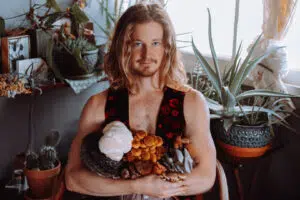
Sam is a writer, award-winning journalist, and emergent mycologist from the United States who arrived at the Fungi Academy one midsummer’s day in 2019 and left six weeks later with lifelong friends and a passion for mushroom cultivation.
In the past year two years, he’s built a laboratory and fruiting room in his home, cultivated and foraged over 20 species of gourmet and medicinal mushrooms, started a medicinal mushroom tincture business and returned to the Fungi Academy to teach his techniques to students.



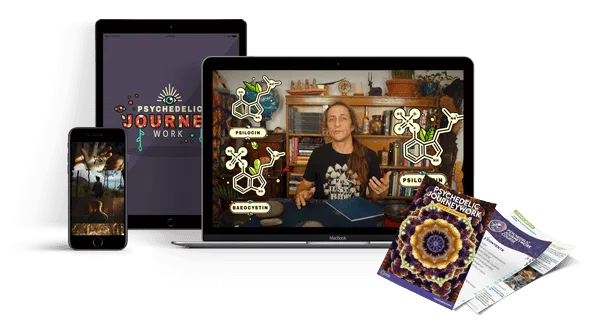

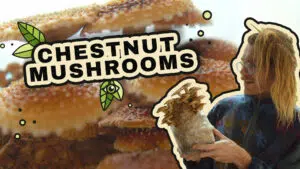


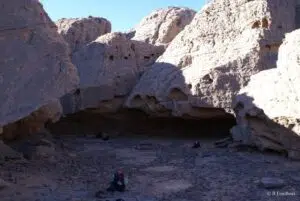

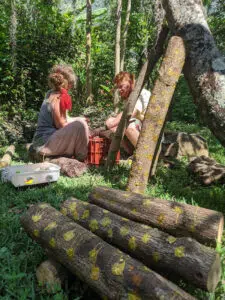
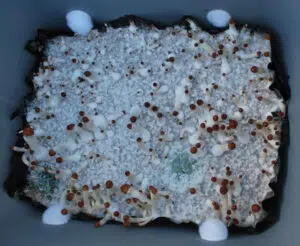
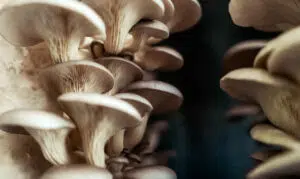

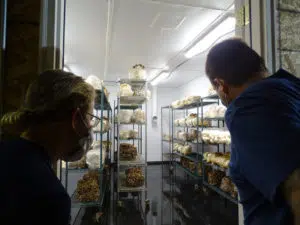



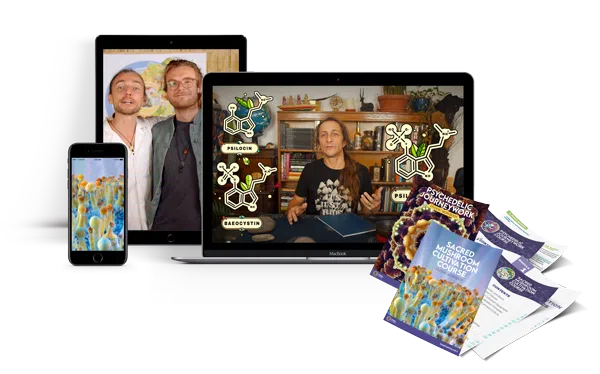

Responses